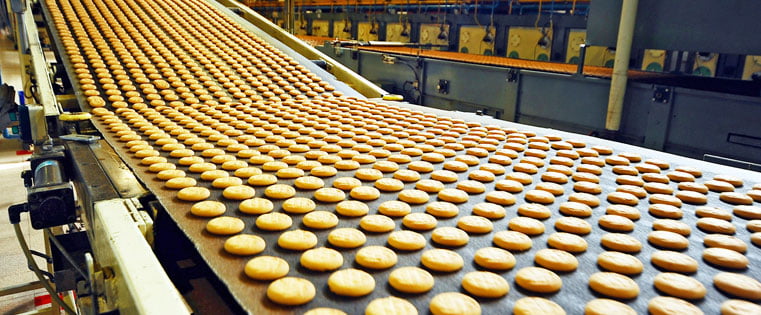
From food packaging and processing to general material handling, the conveyor roller bearing is an underrated superstar of the manufacturing floor. You might even consider it the heart of the whole conveyor assembly. But how does this essential bearing assembly work?
What is a Conveyor Roller Bearing?
A conveyor roller bearing is a specialized bearing which presses into the ends of a conveyor belt roller, allowing the rollers to rotate smoothly. Typically, this conveying belt moves materials along a manufacturing or food processing production line. In this context, smooth operation allows for optimal performance and component lifespan.
As the name suggests, conveyor roller bearings have a cylindrical shape and are designed to carry heavy loads, since the weight is evenly distributed over a large surface area. Also referred to as cylinder rollers, this bearing type can easily handle radial (but not thrust) loads. For a good fit, we always recommend choosing a conveyor roller bearing with the largest diameter at the shortest length in order to minimize roller deflection. For tight spots, needle bearings (a close cousin to roller bearings), offer a very small diameter design envelope.
Steel Conveyor Bearings vs Plastic Conveyor Bearings
Plastic roller bearings offer significant advantages over metal; they are lightweight, require no manual lubrication (for a look at just how much lubrication can build up in a traditional metal bearing, check out our post here) and do not rust or corrode after sanitation baths.
And since they require less energy to turn, they can help you reduce energy costs. Roller bearings excel in virtually any manufacturing environment from cold rooms (explore how Ultracomp plastic bearings increased production for an ice cream manufacturer), to tough, heavy-vibration manufacturing areas.
Ultracomp bearings are available in tube and sheet stock, or can be fabricated to your exact specifications (fill out an engineering worksheet for a custom quote).
See how plastic conveyor roller bearings work in our video:
This crucial bearing application is one of many where material selection has serious implications for performance, lifespan, maintenance needs, and more. For a broader look at bearings and the materials used to make them, we recommend our Bearings 101 page here.
Need more info? Connect with the Conveyor Roller Bearing experts!








